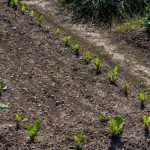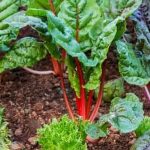The vegetable gardener’s journey begins with the crucial decision of choosing the right location for their garden. From understanding the climate and soil conditions to selecting the best vegetables to grow, there are essential factors to consider. In this article, we will explore the key aspects of creating a successful vegetable garden, from preparation to harvest, and how it can bring joy and benefits to every gardener.
The first step in establishing a thriving vegetable garden is selecting the most suitable location. Factors such as sunlight exposure, soil quality, and water drainage play a significant role in determining the success of your garden. Understanding these elements will ensure that your chosen vegetables have the best chance of thriving in their environment.
Once you have identified the ideal location for your vegetable garden, the next step is selecting the right vegetables for your specific climate. Different vegetables thrive in different conditions, and knowing which ones are best suited for your area will lead to a more successful harvest. Properly aligning your vegetable choices with your climate will set you on track for a bountiful and rewarding gardening experience.
Preparing the soil is another crucial factor in ensuring a flourishing vegetable garden. Proper soil preparation sets the foundation for healthy plant growth by providing necessary nutrients and optimal growing conditions. By following through with each step in preparing your garden and understanding how local climate affects plant growth, you can set yourself up for success in cultivating a robust and productive vegetable garden.
Selecting the Best Vegetables for Your Climate
When it comes to vegetable gardening, one of the most important factors to consider is the climate in which you live. Different vegetables thrive in different climates, so it’s crucial to select the right ones for your specific area. The key to successful vegetable gardening is choosing varieties that are well-suited to your climate, ensuring that they are able to withstand the temperature, sunlight, and soil conditions in your region.
Before selecting your vegetables, take the time to research which plants are best suited for the climate in your area. Consider factors such as average temperatures, frost dates, and humidity levels.
For example, if you live in a cooler climate with shorter growing seasons, you may want to choose cold-hardy vegetables like cabbage, kale, and carrots. On the other hand, if you live in a warmer climate with longer growing seasons, you may have success with heat-tolerant vegetables such as tomatoes, peppers, and squash.
In addition to considering overall climate conditions, also take into account microclimates within your garden space. Certain areas of your yard may receive more or less sun exposure or retain more moisture than others. By understanding these microclimates, you can make more informed decisions about where to plant specific vegetables within your garden. Overall, selecting the best vegetables for your climate is essential for a successful and bountiful harvest in the vegetable gardener’s c.
Preparing the Soil for Planting
One of the crucial steps in vegetable gardening is preparing the soil for planting. Good soil preparation ensures that your plants have the best chance to thrive and produce a bountiful harvest. The first step is to test the soil to determine its pH level and nutrient content. You can do this by purchasing a testing kit from your local garden center or by sending a sample to a cooperative extension office.
Once you have an understanding of your soil’s composition, you can then take steps to improve it if necessary. Adding organic matter such as compost, aged manure, or worm castings can enrich the soil and provide essential nutrients for plant growth. Additionally, tilling the soil to a proper depth will help create a loose and aerated growing medium for your vegetables’ root systems.
It’s important to remove any weeds, rocks, or debris from the planting area before adding amendments and tilling. This will ensure that your vegetable plants are not competing with unwanted plants or facing any obstacles in their growth. By taking these steps to prepare your soil properly, you’ll be setting the stage for a successful vegetable garden.
| Soil Preparation Steps | Benefits |
|---|---|
| Test the soil pH and nutrient content | Determine what amendments are needed |
| Add organic matter such as compost or aged manure | Enriches the soil with essential nutrients |
| Till the soil to create a loose growing medium | Promotes healthy root growth and water retention |
Importance of Proper Watering and Irrigation
Proper watering and irrigation are crucial aspects of successful vegetable gardening. Without adequate water, your plants can suffer from wilting, poor fruit development, and even death. Therefore, it is important for the vegetable gardener to understand the importance of providing the right amount of water at the right time.
One of the first steps in proper watering and irrigation is to know the specific water needs of each type of vegetable you are growing. For example, leafy greens like lettuce and spinach require more frequent watering than root vegetables like carrots and radishes. Additionally, understanding your local climate and weather patterns will help you determine how often and how much to water your garden.
In addition to frequency, the method of watering is also important. While hand watering can be effective for small gardens, larger gardens may benefit from drip irrigation or soaker hoses. These methods not only conserve water by delivering it directly to the plant roots but also help prevent diseases by keeping foliage dry. It’s crucial that all vegetable gardeners become familiar with different methods of irrigation to ensure their plants get enough water without overwatering.
| Watering Techniques | Vegetable Watering Needs |
|---|---|
| Drip Irrigation | Varies by types of vegetables |
| Soaker Hoses | Leafy greens need more frequent watering than root vegetables |
Essential Tools and Equipment for Vegetable Gardening
When it comes to vegetable gardening, having the right tools and equipment can make all the difference in your success. From preparing the soil to maintaining your garden, the right gear can help streamline the process and ensure that you have a productive growing season.
Basic Gardening Tools
Every vegetable gardener should have a few basic tools on hand. A sturdy hoe, garden rake, hand trowel, and pruners are essential for tasks like weeding, cultivating the soil, and harvesting vegetables. A quality watering can or hose is also necessary for keeping your plants properly hydrated.
Garden Protection
Investing in some form of garden protection can help ensure that your hard work doesn’t go to waste. This can include items like row covers to protect against pests and frost, as well as netting to keep birds from feasting on your crops.
Improving Efficiency
For larger gardens or those with mobility limitations, tools like a wheelbarrow or garden cart can be invaluable for transporting soil, compost, and harvested produce around the garden. Additionally, consider investing in a soaker hose or drip irrigation system to efficiently water your plants while minimizing water waste.
By having the right tools and equipment at your disposal, you can set yourself up for success as a vegetable gardener. Making sure you have what you need to cultivate your plot effectively will help ensure a bountiful harvest for you and your family to enjoy.
Understanding Pest Control and Disease Prevention
Pest control and disease prevention are crucial aspects of maintaining a successful vegetable garden. Without proper strategies in place, your hard work in growing vegetables can easily be destroyed by pests and diseases. Here are some important methods to consider for keeping your vegetable garden healthy and thriving:
- Identifying common pests and diseases: One of the first steps in preventing issues in your vegetable garden is to familiarize yourself with the most common pests and diseases that can affect the plants you are growing. This knowledge will help you take proactive measures to prevent infestations or outbreaks.
- Natural pest control methods: Many vegetable gardeners prefer to use natural methods for controlling pests, as opposed to chemical pesticides which can be harmful to the environment and non-target species. Techniques such as companion planting, attracting beneficial insects, and using homemade pest deterrents can be effective solutions for managing pests in a sustainable manner.
- Disease prevention practices: Proper sanitation, crop rotation, and selecting disease-resistant varieties are important practices for preventing the spread of diseases in your vegetable garden. Ensuring that your plants have good air circulation and adequate spacing can also help reduce the risk of fungal infections.
Implementing these strategies for pest control and disease prevention not only helps protect your vegetables from harm, but it also contributes to the overall health of your garden ecosystem. By prioritizing natural and sustainable methods, you can create a balance that supports a thriving vegetable garden while minimizing negative impacts on the environment.
Ultimately, understanding how to effectively manage pests and prevent diseases in your vegetable garden is essential for achieving a successful harvest. Taking a proactive approach to these challenges will help ensure that your hard work pays off with an abundance of healthy, homegrown produce for you and your family to enjoy.
Tips for Successful Harvesting and Storage
Successfully harvesting and storing your homegrown vegetables is a rewarding and essential part of the vegetable gardener’s experience. After putting in the hard work of planting, nurturing, and caring for your garden, it’s important to know the best practices for ensuring that your harvest remains fresh and delicious for as long as possible.
One crucial tip for successful harvesting is to pick your vegetables at the right time. Each type of vegetable has its own ideal picking stage, whether it’s when they reach a certain size, color, or texture.
Harvesting too early can result in underdeveloped flavors and nutrients, while waiting too long can lead to tough or overripe produce. By understanding the specific harvesting guidelines for each vegetable in your garden, you can ensure that you’re enjoying them at their peak quality.
Once you’ve harvested your vegetables, proper storage is key to maximizing their shelf life. For many vegetables, cool temperatures and high humidity are important considerations. Root vegetables like carrots and potatoes should be stored in a cool, dark place with high humidity to prevent wilting and sprouting.
On the other hand, tomatoes and peppers should be stored at room temperature to maintain their flavor and texture. Understanding the unique storage requirements of each vegetable will help you keep them fresh for longer periods.
In addition to proper harvesting and storage techniques, it’s also important to make use of preservation methods such as canning, freezing, or drying excess harvests. These methods not only allow you to enjoy your homegrown produce throughout the year but also reduce waste by utilizing all your hard-earned bounty from the garden. By implementing these tips for successful harvesting and storage, you can fully savor the fruits of your labor as a dedicated vegetable gardener.
The Joy of Growing Your Own Food
Growing your own food in a vegetable garden brings a sense of pride and accomplishment to any gardener. There are numerous benefits to be enjoyed from cultivating and nurturing your vegetables, not to mention the delicious and nutritious produce that you get to enjoy. Here are some of the key advantages of being a vegetable gardener:
- Quality and Taste: The taste of homegrown vegetables surpasses that of store-bought ones by a long shot. The freshness and high quality of your produce will surely enhance your culinary creations.
- Saving Money: By growing your own vegetables, you can significantly reduce your grocery bills. Additionally, the initial investment in seeds, tools, and soil amendments will pay off through months of bountiful harvests.
- Physical and Mental Health: Gardening is an excellent form of exercise that also provides stress relief. Spending time outdoors tending to your plants can contribute to improved mental well-being and overall happiness.
In addition to these tangible benefits, the vegetable gardener’s c experience also fosters environmental sustainability and community-building. By reducing the reliance on commercially grown produce, vegetable gardening promotes eco-friendly practices while potentially establishing connections with fellow gardeners or neighbors. Furthermore, sharing excess harvests with friends or donating them to local food banks can build a sense of solidarity within the community.
Finally, having a bountiful harvest from your own garden promotes self-sufficiency and resilience in times of need. Your ability to grow food for yourself and others demonstrates an important skill that may prove invaluable during uncertain times. Ultimately, becoming a vegetable gardener is not just about the fruits (and vegetables) of labor but about embracing a fulfilling lifestyle rooted in sustainability and self-reliance.
Creating a Sustainable and Organic Vegetable Garden
Composting and Soil Health
One of the key components of creating a sustainable and organic vegetable garden is maintaining healthy soil. Composting is an excellent way to enrich your soil with essential nutrients and improve its overall structure. By recycling kitchen scraps, yard waste, and other organic materials, you can create nutrient-rich compost that will nourish your plants. Additionally, using natural fertilizers such as manure or compost tea can help keep your garden thriving without relying on synthetic chemicals.
Planting Native Species
When choosing which vegetables to plant in your garden, consider selecting native species that are well-suited to your climate and soil conditions. These plants are naturally adapted to thrive in your area, making them more resistant to pests and diseases. By growing native species, you can also support local biodiversity and contribute to a healthier ecosystem.
Water Conservation
In a sustainable vegetable garden, it’s important to practice water conservation techniques. Consider installing a rainwater collection system to utilize natural precipitation for watering your plants. Additionally, using mulch around your crops can help retain moisture in the soil and reduce water evaporation. By being mindful of water usage, you can minimize waste while still providing adequate hydration for your vegetables.
By implementing these sustainable practices in your vegetable garden, you can create an environmentally-friendly space that produces bountiful harvests without compromising the health of the planet. The vegetable gardener’s commitment to sustainability pays off not only in a rich harvest but also in knowing that they are contributing positively to their local environment.
Troubleshooting Common Problems in Vegetable Gardening
In conclusion, while vegetable gardening can be a rewarding and fulfilling experience, it is not without its challenges. However, with the right knowledge, preparation, and mindset, these common problems can be easily managed. From choosing the right location and climate-appropriate vegetables to understanding pest control and disease prevention, the vegetable gardener’s journey is indeed filled with valuable lessons and experiences.
One of the key factors in overcoming common issues in vegetable gardening is being proactive and observant. By regularly inspecting your plants for signs of pests or disease, you can catch problems early and take appropriate action. Additionally, proper soil preparation and watering techniques can greatly reduce the risk of many common issues such as poor plant growth or fungal infections.
Moreover, building a sustainable and organic vegetable garden not only benefits the environment but also promotes natural balance within the garden ecosystem. By practicing techniques such as companion planting and using natural pest control methods, the vegetable gardener can create a harmonious environment where plants thrive and problems are kept at bay. The joy of growing your own food is truly amplified when you successfully navigate through common challenges and enjoy a bountiful harvest from your efforts.
Frequently Asked Questions
What Is the Best Starter Vegetable Garden?
The best starter vegetable garden typically includes easy-to-grow and low-maintenance vegetables such as tomatoes, lettuce, bell peppers, and green beans. These plants are generally hardy and forgiving for beginners.
What Are the Easiest Fruits and Vegetables to Grow?
Some of the easiest fruits and vegetables to grow include strawberries, tomatoes, cucumbers, zucchini, and radishes. These plants generally require minimal care and attention while providing a good harvest for beginners.
What Are the Easiest Greens to Grow?
When it comes to the easiest greens to grow, options like lettuce, spinach, kale, and arugula are popular choices. These greens tend to be resilient and can thrive in various growing conditions with minimal effort from the gardener.

If you’re looking to get into vegetable gardening, or are just looking for some tips on how to make your current garden better, then you’ve come to the right place! My name is Ethel and I have been gardening for years. In this blog, I’m going to share with you some of my best tips on how to create a successful vegetable garden.





